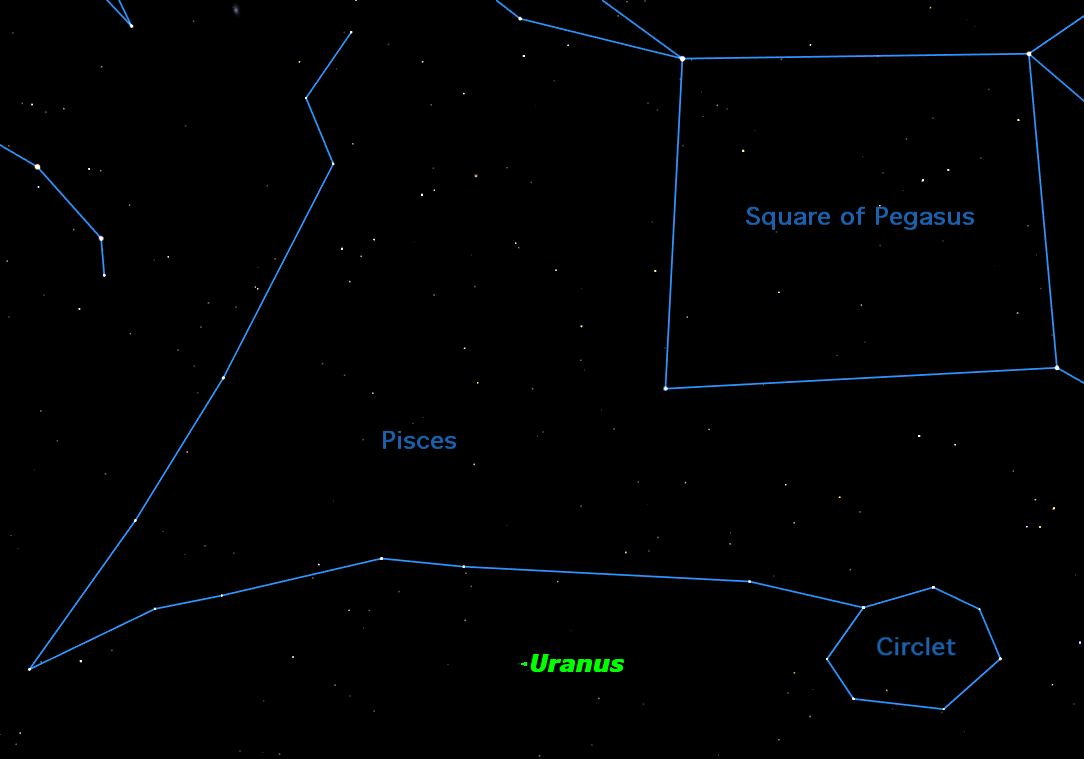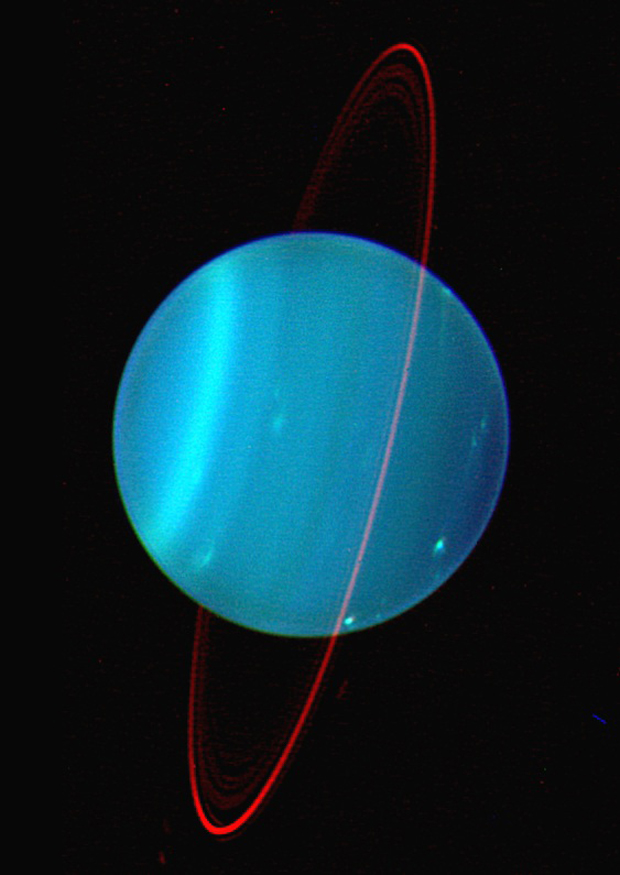Uranus Shines At Its Best Thursday: How to See It

Most of the planets in the solar system hover close to the sun, which makes them among the brightest objects in the sky.
The outer planets, Uranus and Neptune, are far from the sun and catch few of its rays, making them dim and hard to find. Uranus, for example, reaches opposition with the sun on Thursday (Oct. 3). Directly opposite the sun in our sky, it is at its closest and brightest, yet it is only just barely visible to the unaided eye in a dark moonless sky. For most people, a set of binoculars will be an essential tool for spotting Uranus.
Finding Uranus is done through a technique popular with amateur astronomers called "starhopping." We use the brighter stars as guideposts to locate faint or distant objects. In this case, we start with the most prominent group of stars in the autumn sky: the four stars that form the Square of Pegasus. Although not among the brightest stars, these are all good second magnitude stars, about as bright as the stars in the Big Dipper. [Photos of Uranus, the Odd Tilted Planet]
If you aren't able to catch sight of Uranus at opposition this week, you can tune in to the online Slooh Space Camera on Thursday at 9:30 p.m. EDT (0130 Oct. 4 GMT) to see their live broadcast of the celestial event. You can watch the Uranus webcast live on SPACE.com courtesy of Slooh.
Many people who go looking for the Square of Pegasus miss it because it is so large. The four sides of the square are roughly 15 degrees long, about the length of the handle of the Big Dipper. Look for them in the east as the sky gets dark around 9 p.m. local time. At that time, the square is rising, so is tilted over, making it diamond shaped.
Now we begin our "starhop." If you're in the Northern Hemisphere, we start with the two stars that form the bottom of the square. Make that one side of a south-pointing equilateral triangle. The southern point of the triangle marks the "Circlet," part of the dim constellation of Pisces. This is an oval of dim stars, more easily seen in binoculars than with the unaided eye.
To the left of the Circlet is a chain of stars, part of the chain that binds the two fish of Pisces together. The first two stars in this chain are a bit brighter than the rest. About half way between these two stars, and a bit to the south, you should find Uranus.
Breaking space news, the latest updates on rocket launches, skywatching events and more!
How will you know you have found it? First of all, although dim, Uranus is brighter than any of the stars in this area. Secondly, it has a distinctive blue-green color, quite unlike any star. Finally, if you plot its position relative to the stars, and check again in a few days, you will find that it has moved to the right.
Of course, the acid test is to point a telescope at it. Most newcomers to astronomy are surprised at how small any of the planets appear in a telescope, but Uranus is smaller still, a mere 3.7 arc seconds in diameter, about a tenth the size of Jupiter. Unless you have a very large telescope, it will appear as nothing more than a tiny blue-green pinhead.
This article was provided to SPACE.com by Starry Night Education, the leader in space science curriculum solutions. Follow Starry Night on Twitter @StarryNightEdu. Follow SPACE.com @Spacedotcom, Facebook and Google+. Original article on SPACE.com.

Geoff Gaherty was Space.com's Night Sky columnist and in partnership with Starry Night software and a dedicated amateur astronomer who sought to share the wonders of the night sky with the world. Based in Canada, Geoff studied mathematics and physics at McGill University and earned a Ph.D. in anthropology from the University of Toronto, all while pursuing a passion for the night sky and serving as an astronomy communicator. He credited a partial solar eclipse observed in 1946 (at age 5) and his 1957 sighting of the Comet Arend-Roland as a teenager for sparking his interest in amateur astronomy. In 2008, Geoff won the Chant Medal from the Royal Astronomical Society of Canada, an award given to a Canadian amateur astronomer in recognition of their lifetime achievements. Sadly, Geoff passed away July 7, 2016 due to complications from a kidney transplant, but his legacy continues at Starry Night.


